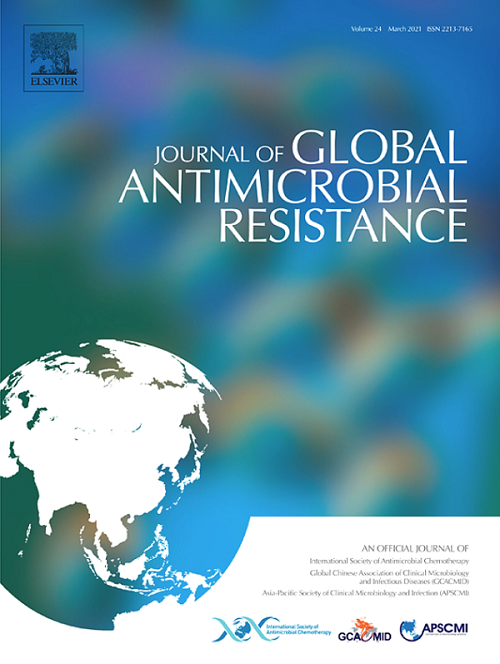Phenotypic and in silico characterization of carbapenem-resistant Serratia marcescens clinical strains
IF 3.7
3区 医学
Q2 INFECTIOUS DISEASES
引用次数: 0
Abstract
Background
Serratia marcescens, an opportunistic nosocomial Gram-negative bacterium pathogen, has emerged as an important cause of healthcare-associated infections owing to its acquisition of antimicrobial resistance genes (ARGs) and virulence factor determinants.
Methods
Four carbapenem-resistant S. marcescens strains were recovered from patients admitted to different hospitals in 2017 and 2018. We assessed the antimicrobial resistance and virulence context, as well as the genetic similarities of four Brazilian S. marcescens strains, and compared the genomes of these S. marcescens isolates with whole genome data of 428 S. marcescens strains available in the NCBI Reference Sequence. Antimicrobial susceptibility testing was performed by disk diffusion and broth microdilution methods according to CLSI recommendations. Whole genome sequencing was performed using Illumina NextSeq 250-bp paired-end sequencing for two isolates, Sm424 and Sm613, which presented representative phenotypes.
Results
The pathogenicity of both sequenced strains was predicted using the Pathogen Finder tool. Both isolates carried efflux system genes (RND, SMR, MFS, ABC-family) and resistance genes (blaSTR-2, aac(6′)-Ic, fos). Virulence factor genes involved in motility, regulation, capsule formation, acid resistance, and acriflavine resistance were also found. The Pathogen Finder tool predicted a > 71% probability of being a human pathogen for Sm424 and Sm613.
Conclusion
S. marcescens has shown increased adaptive, resistance, and pathogenic potential, being responsible for different nosocomial infections.
耐碳青霉烯粘质沙雷菌临床菌株的表型和硅表征。
背景:粘质沙雷氏菌是一种机会性医院感染的革兰氏阴性细菌病原体,由于其获得抗微生物药物耐药性基因(ARGs)和毒力因子决定因素,已成为卫生保健相关感染的重要原因。方法:从2017年和2018年不同医院收治的患者中回收4株耐碳青霉烯类粘质葡萄球菌。我们评估了4株巴西粘质葡萄球菌的耐药性和毒力背景,以及遗传相似性,并将这些粘质葡萄球菌分离物的基因组与NCBI参考序列中428株粘质葡萄球菌的全基因组数据进行了比较。采用纸片扩散法和微量肉汤稀释法进行药敏试验。采用Illumina NextSeq 250 bp对分离株Sm424和Sm613进行全基因组测序,获得具有代表性的表型。结果:利用病原体查找工具预测了两种测序菌株的致病性。两个分离株都携带外排系统基因(RND、SMR、MFS、ABC-family)和抗性基因(blast -2、aac(6′)-Ic、fos)。毒力因子基因参与运动,调节,胶囊形成,耐酸和抗吖啶黄素。病原体查找工具预测Sm424和Sm613为人类病原体的概率为0.71%。结论:粘质葡萄球菌具有较强的适应性、耐药性和致病性,与不同类型的医院感染有关。
本文章由计算机程序翻译,如有差异,请以英文原文为准。
求助全文
约1分钟内获得全文
求助全文
来源期刊

Journal of global antimicrobial resistance
INFECTIOUS DISEASES-PHARMACOLOGY & PHARMACY
CiteScore
8.70
自引率
2.20%
发文量
285
审稿时长
34 weeks
期刊介绍:
The Journal of Global Antimicrobial Resistance (JGAR) is a quarterly online journal run by an international Editorial Board that focuses on the global spread of antibiotic-resistant microbes.
JGAR is a dedicated journal for all professionals working in research, health care, the environment and animal infection control, aiming to track the resistance threat worldwide and provides a single voice devoted to antimicrobial resistance (AMR).
Featuring peer-reviewed and up to date research articles, reviews, short notes and hot topics JGAR covers the key topics related to antibacterial, antiviral, antifungal and antiparasitic resistance.
 求助内容:
求助内容: 应助结果提醒方式:
应助结果提醒方式:


